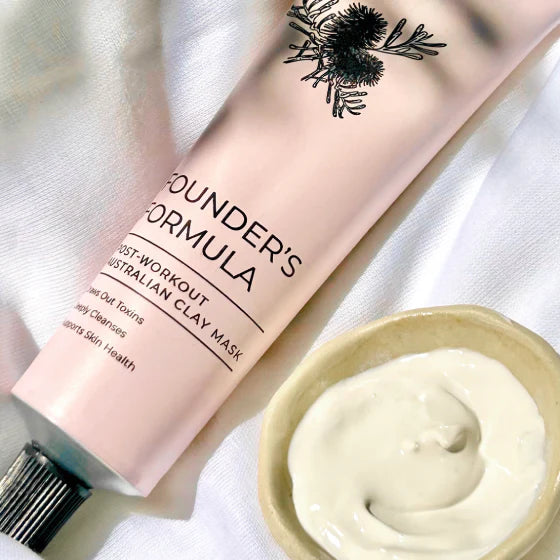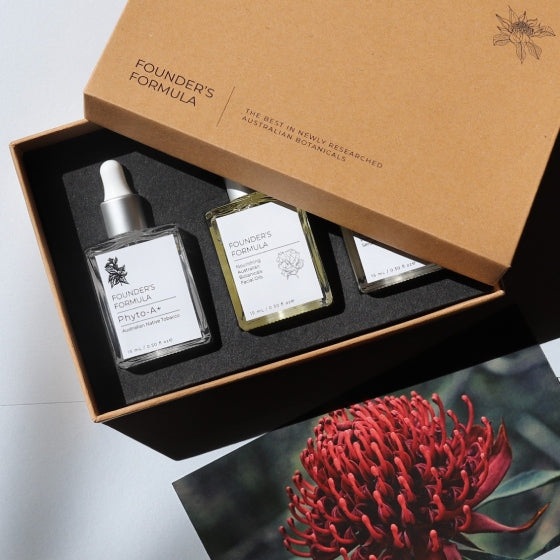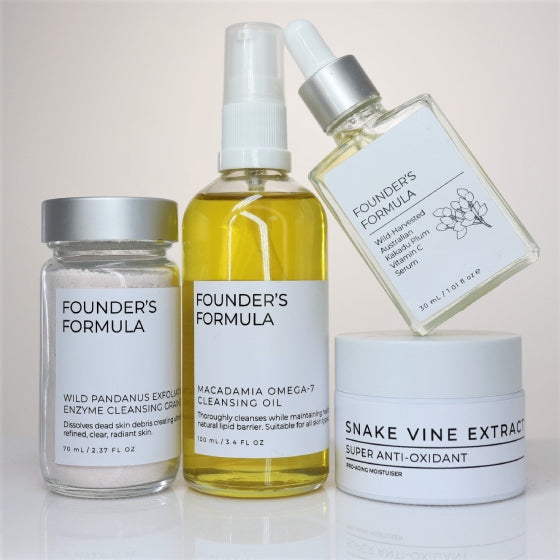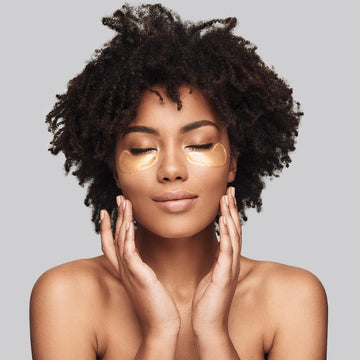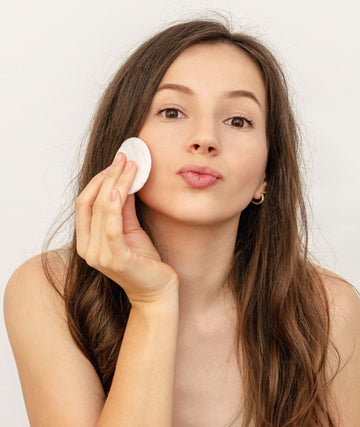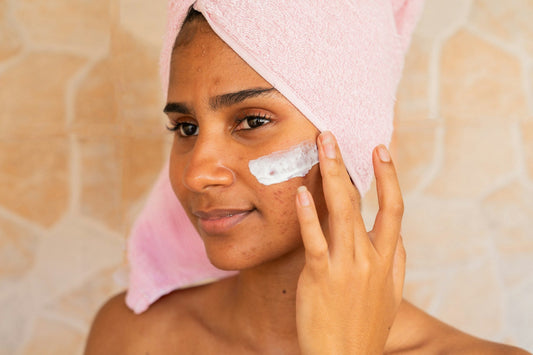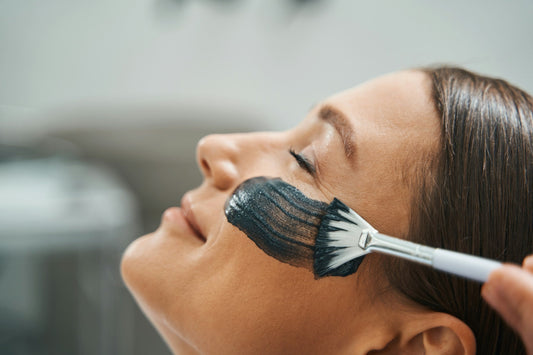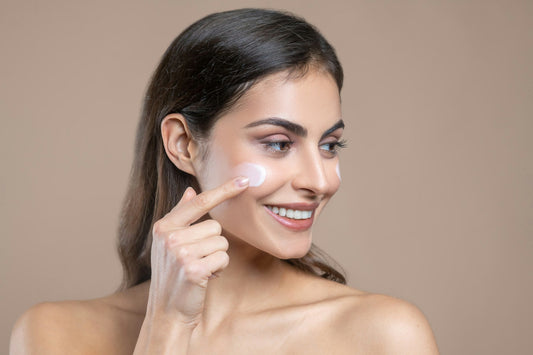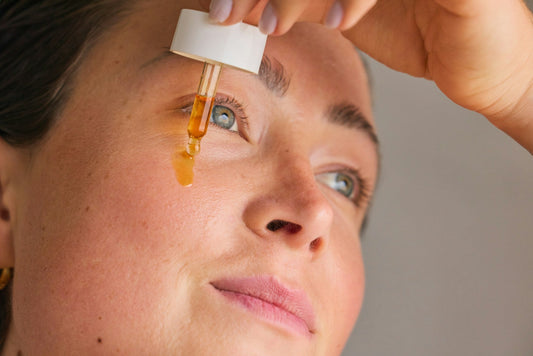Beauty Wisdom
Beauty Wisdom
How To Create Personalised Skincare Gift Sets For Every Budget
Skincare gift sets tick all the right boxes. They’re thoughtful, practical and personal. Whether it's for a birthday, a thank-you or just because, skincare makes a great gift that feels indulgent without being over the top. With a little care, you can create something that shows you’ve really thought about what the other person would enjoy rather than grabbing a generic gift off a shelf.
The beauty of a personalised skincare set is its adaptability. You don’t have to spend loads to make it feel meaningful. Whether you’re planning for a small surprise or a luxe experience, it’s all about how you tailor the products to suit the person receiving it. When you know how to match the right skincare items with the right skin type, building a skincare gift set for any budget becomes easy, thoughtful and fun to create.
Understanding The Recipient’s Skin Needs
Before you start choosing products, it helps to understand what kind of skin the person has. Even if you’re not an expert, there are a few simple clues that can point you in the right direction. Notice how their skin looks day-to-day. Is it quite shiny or more on the dry side? Do they talk about having breakouts or feeling tight and itchy after washing their face? These small details can help you pick products that actually support their skin.
If you’re close to the person, you could ask questions like:
- Do your cheeks ever feel dry or flaky?- Does your skin feel oily by lunchtime?- What kind of products do you like using: gels, creams, light stuff or rich formulas?- Do you react easily to skincare or do you have to be careful with what you use?
Once you’ve got a good idea of what might suit them, it’s time to match with products that offer real support. For dry or sensitive skin types, look for hydrating cream-based products with soothing plant ingredients like Native River Mint or Snowflower. These tend to calm irritation and give skin moisture without any heaviness.
If their skin is more on the oily or acne-prone side, lightweight options like a gentle gel-based cleanser or an oil-balancing serum work well. Australian botanicals such as Finger Lime and Lemon Myrtle are known to naturally clarify the skin and help minimise shine while still keeping it hydrated.
For combination skin, go for a mix. Maybe a light moisturiser with some calming ingredients and a serum that targets spots or rough patches. Keep everything low-irritant and build the set around balance.
Understanding the person’s skin means you’re picking something they’re more likely to enjoy and use. It also makes the gift feel more personal and shows that you put real thought into it.
Budget-Friendly Skincare Gift Set Ideas
You don’t need to spend big to put together a skincare gift that feels special. Some of the most memorable gifts are made from simple combinations that work well together. The key is choosing products that are useful, gentle and suit a wide range of people.
Here’s a simple list of what can go into a low-cost but lovely skincare set:
1. A gentle daily cleanser with calming botanicals like Desert Lime or Native Green Tea2. A hydrating mist or toner that refreshes the skin without any harsh ingredients3. A lightweight moisturiser that absorbs easily and doesn’t leave a greasy feel4. An optional travel-size face oil or balm that adds a little luxury without adding too much to the price
You can bundle two or three of these items together using a small gift box or eco-friendly pouch. A handwritten label or name tag can add a nice touch. Try to stick with colour themes or pick products with matching scents for a bit of harmony across the set.
Many gift givers like these simple options because they strike a good balance between relevance and affordability. And when those products feature local botanicals that are naturally kind to skin, they give the recipient something both practical and refreshing.
Mid-Range Skincare Gift Set Ideas
If you’re working with a bit more to spend, a mid-range skincare gift set opens up room for some extras that elevate the whole experience. At this stage, you can start experimenting with textures, layering products or playing with a theme such as skin brightening or deep hydration. These gift sets feel more complete and work well for people who already have an interest in skincare.
Here’s what you can add to build on a basic set:
- A plant-based serum enriched with ingredients like Queensland Davidson Plum to brighten dull skin- A nourishing cream moisturiser with antioxidant-rich native extracts like Emu Apple- A face mask or exfoliating polish that gently renews skin without stripping it- A facial oil infused with botanical-rich actives to support the skin’s barrier- A petite towel or face cloth to round out the set
Combining treatment products like masks and oils into a gifting arrangement gives it a feel of at-home pampering. It’s also a nice way to introduce someone to products they might enjoy but wouldn’t necessarily pick for themselves. This sort of gift is great for a sister, partner or friend who values self-care and leans toward quality or health-focused products.
Pick items that serve a purpose but are still gentle enough to suit most users. If you know the skin type of the receiver, tailor it. If you're not too sure, aim for medium-weight products that offer balance without being too rich or too light. A creamy moisturiser with calming botanicals like Kangaroo Flower may be a good all-rounder, while something like Green Coffee seed extract inside a serum can help to perk up tired-looking skin.
Luxury Skincare Gift Set Ideas
For a luxe gift set, go all out with advanced products that feel indulgent yet useful. These are the kinds of sets that make someone feel really seen and treated. Whether it's for a special holiday, a milestone birthday or a thank-you to someone important, a high-end skincare gift shows thought and care through quality choices.
Here are a few luxury skincare items that look and feel premium:
- A pro-ageing moisturiser with collagen-boosting native compounds like Muntries or Quandong- A deeply hydrating serum designed to restore elasticity and help smooth skin texture- A rich facial oil packed with antioxidants and native oils for deep nourishment- A plush headband or reusable cloth pads to add a spa-like vibe
Texture also plays a part in the gifting experience here. Rich, velvety creams or serums that feel silky and absorb smoothly make the gift feel even more indulgent. These work well for mature skin or anyone looking to reduce dullness and maintain skin bounce.
Presentation matters even more with higher-end gifts. Opt for gifting in a box with compartments or include a reusable pouch or toiletry bag. You could even wrap each product separately for an unwrapping experience that feels as special as the products themselves.
How To Personalise The Presentation
There’s something unforgettable about a beautifully packaged gift. You could have all the right products, but if they arrive simply tossed into a plastic bag, the impact is lost. The way you present your skincare gift set shows as much care as the products picked for it.
Here are a few easy ways to personalise the look and feel:
- Use kraft paper boxes or linen pouches instead of plastic- Choose tissue wrapping and soft ribbon to add a thoughtful touch- Tuck in a handwritten note describing how to use each item- Add a monogram tag or the recipient's name on the front
If you’re grouping products around a specific theme such as hydration, glow or calm, consider colour matching product labels, box liners and note cards. It’s a small detail that adds visual harmony. This gives the gift a tidy, curated look and feels more intentional.
Presentation doesn’t need to look over-produced. Simple choices made with care often land better than overly fancy designs. Whether you’re wrapping two products or ten, a clean and appealing finish goes a long way.
Gifting That Speaks to Skin and Style
Personalised skincare gifts work well because they show real attention. Instead of running to the shops and grabbing whatever’s on sale, you're creating something that fits the person’s skin, style and routine. That personal element always lands better than a one-size-fits-all gift.
Whether you go small and simple or large and luxurious, the idea is the same. Match the set to the individual. Use their skin needs and preferences as your guide, mix in botanicals that care for their skin naturally and package it with love. You don’t need a big budget to make a skincare gift feel special. The key is thoughtfulness in every step along the way.
Elevate your skincare gifting experience with a curated touch from Founder's Formula. Our thoughtfully designed sets include a range of luxurious options, such as our face moisturiser for very dry skin, perfect for adding deep hydration and nourishment. Whether you're celebrating a special occasion or simply sharing kindness, our products speak volumes about your care and consideration. Explore our lush offerings and create a personalised gift that delights and pampers any skin type.
Do Organic Products Actually Work for Problem Skin?
When your skin starts acting up, it’s normal to wonder if switching to a more natural routine might help. Many of us with dryness, breakouts, or reactive skin look for something gentler, hoping to give our skin a break from harsher ingredients. As summer gets closer here in Australia and the weather turns warmer, there’s even more reason to keep things simple and soothing.
Rising temps, more time in the sun, and sticky humidity can all throw skin out of whack. That’s often when redness, oiliness, or dry patches show up more than usual. With the shift in season, using products made with organic skincare ingredients can feel like an easy way to reset. But do they actually help when skin is flaring or feeling overwhelmed? Let’s take a look at what makes problem skin tick and how plant-based support might make all the difference.
Understanding Problem Skin and What Affects It
Problem skin isn’t just about acne or dry spots. It can mean a bunch of things, tightness, breakouts that won’t go away, patches that sting, or skin that somehow feels rough no matter what you put on it. These signs often point to one thing: your skin barrier’s struggling.
When the seasons change, especially leading into summer, those problems tend to show up more often. A few common triggers include:
• UV exposure breaking down your moisture barrier• Humid air mixing with oil and sweat to clog pores• Hot wind or salty air drying out surface layers
For skin that’s already sensitive or unsettled, the switch to sticky, warm weather can make things worse. That’s why we focus on calming and hydrating ingredients during this time of year. Going lighter with your routine and using ingredients that help rebuild lost moisture can cut down on inflammation and help skin settle.
How Organic Skincare Differs from Regular Products
When you reach for organic skincare, what you’re really choosing is a formula based on naturally grown, plant-rich ingredients made without synthetic chemicals. This usually means the oils, extracts, and waxes used are grown in a cleaner way and processed more gently.
That can benefit stressed or reactive skin in a few important ways:
• No harsh additives like drying alcohol or synthetic fragrances• Natural emollients that support the skin’s protective layer• Soothing botanicals that help reduce visible irritation
Our Wild Rosella Hydrating Moisturiser is an award-winner at the Clean + Conscious Awards 2023 and is clinically tested for hydration and comfort for sensitive, reactive skin.
For many people with problem-prone skin, less is more. Avoiding ingredients that irritate or confuse the skin allows it to recover without extra stress. Choosing formulas with clear, minimal ingredients makes it easier to track what works and what doesn’t, especially as the season shifts.
Ingredients in Organic Skincare That Help Soothe Problem Skin
The best way to see if organic skincare will help is by looking at the ingredients. Many of the same plants that grow in our backyards are loaded with skin-supporting compounds. Here are a few we tend to reach for again and again:
• Aloe Vera and Glycerin, Excellent for locking in hydration without clogging pores• Wild Rosella, Known for its brightening antioxidants and hydration-boosting properties• Snake Vine, A native plant packed with antioxidant compounds that help restore resilience• Kakadu Plum, Rich in Vitamin C, it helps brighten and support stressed skin• Oat and Cucumber Extracts, Naturally cooling and calming for spots of redness, flaking, or tightness
Organic doesn’t mean less powerful. These ingredients work best when used consistently, helping skin slowly regain balance rather than forcing fast surface changes.
What to Look For (and Avoid) When Building a Routine
Not every product made with natural ingredients will suit every skin type. The trick is finding that middle ground between hydration and protection without making your skin feel smothered. For summer, it’s especially important to balance moisture with breathability.
Here’s what we recommend:
• Choose products with lightweight textures that layer easily• Avoid formulas heavy in essential oils if your skin is reactive• Keep your steps simple, cleanse, hydrate, and protect• Skip constantly switching products or piling on multiple actives
Products like Wild Rosella Hydrating Moisturiser are useful for daily hydration that doesn’t feel greasy or heavy. Snake Vine Super Anti-Oxidant Pro-Aging Moisturiser works well to support elasticity and firmness without overwhelming the skin. At night, something like our Botanical Barrier Balm can lock in hydration while helping calm any irritation that’s shown up during the day.
In building a routine for problem-prone skin, paying attention to what feels good and what causes discomfort is key. Sometimes, less really is best, especially if your skin has become sensitive from seasonal changes or from using too many actives. A streamlined regimen lets you notice improvements and see what truly benefits your skin, so you’re not complicating things further.
Building a Summer-Friendly Routine with Organic Support
The change in weather doesn’t mean you have to overhaul your whole skincare shelf. A few tweaks go a long way when the heat rolls in.
Start your morning with a soft cleanse and follow with a lightweight moisturiser like Wild Rosella. If your skin tends to get dry around the eyes or cheeks, pressing in a small amount of balm can help prevent that tight feeling later in the day. And don’t forget UV protection as your last step.
Evenings are the time to rest and repair. Use a rich but breathable moisturiser like Snake Vine to help ease the effects of sun, wind, or pollution. If your skin’s feeling particularly rough or irritated, finish with a thin layer of barrier balm over your driest spots. There’s no need to do every step every night, some nights, skin simply needs less.
During summer, adjusting your products to fit the level of heat and humidity can go a long way toward keeping irritations at bay. If your skin usually struggles when the temperature climbs, try using lighter layers and focusing on soothing, barrier-supporting ingredients when possible. It’s also smart to pay attention to how your skin is feeling from week to week. Seasonal changes happen fast, and tuning in to minor discomfort lets you make small routine tweaks before bigger flare-ups develop.
Letting Nature Help Without Overdoing It
It’s easy to get stuck thinking that the more products we use, the faster our skin will get better. But problem skin often does best with a slower, steadier approach. That’s where plant-based formulas can make a difference. They’re often gentler, and over time, they help the skin feel more comfortable and balanced.
Organic skincare may not be a magic fix, but when we give our skin ingredients that support rather than challenge it, progress becomes easier to see. Building a routine with fewer steps and higher quality ingredients means we can stop guessing and start listening to what our skin actually needs, especially in the warmer months. Keeping things simple, steady, and supportive is often the best strategy for skin that just wants to recover.
Warmer weather can leave skin feeling unsettled, so we recommend keeping your routine gentle and focused on nourishing, breathable layers to soothe irritation and retain moisture. At Founder's Formula, our top pick for everyday care is our Wild Rosella Hydrating Moisturiser, a lightweight blend bursting with botanicals to support your skin barrier. Bringing true organic skincare into your daily lineup adds a calming boost of hydration you can rely on. For personalised advice on which products suit your skin best, reach out and our team will be happy to guide you.
Plant-Based Moisturisers: Solutions For Different Skin Types
Finding a moisturiser that matches your skin’s needs can feel like a process of trial and error. Many people look for products that won’t clog pores, leave their skin greasy, or cause dryness. That’s where plant-based moisturisers have started to stand out. These products use ingredients from nature like oils, extracts and botanicals, offering a simple way to keep skin hydrated without harsh extras. They’ve become a go-to for those wanting clean, gentle skincare that still gives visible results.
With more attention being paid to ingredients, plant-based options have grown in popularity. But the challenge is still finding the right match for your skin type. Not every cream or lotion works the same way for dry, oily, combination or sensitive skin. What’s inside the formula matters. That’s where native Australian botanicals come in. These locally sourced plant extracts offer specific support for different skin concerns, making them suited to a wide variety of skin types and conditions.
Understanding Plant-Based Moisturisers
A plant-based moisturiser uses ingredients made from plant parts—things like seeds, fruits, flowers, nuts, or leaves. These moisturisers often include natural compounds such as vitamins, antioxidants, and fatty acids that care for your skin. Since they skip many of the synthetic fillers or fragrance-heavy ingredients found in many standard products, plant-based moisturisers are often better for people with sensitive or reactive skin.
They also work well because they blend with the skin’s natural oils. Many contain light plant oils or hydration that absorb quickly without leaving behind a greasy layer. This kind of balance is great when seasons change—like late spring—when the skin can switch from dry to oily depending on the weather.
Plant-based moisturisers can offer support in a few key ways:
- Hold in moisture with nourishing oils like jojoba or macadamia- Calm redness with soothing ingredients such as calendula or chamomile- Gently help with tone and texture using fruit enzymes and natural acids- Soften and smooth dry areas with plant-sourced fatty acids- Defend against daily exposure with antioxidant-rich botanicals
For people wanting more control over what they put on their skin, these products offer more transparency. You know what you’re using, and often it’s easier to spot what your skin responds well to when you’re not dealing with a confusing list of synthetic ingredients.
Selecting the Right Moisturiser for Your Skin Type
Not all skin is the same, so a moisturiser that works wonders for one person might do nothing for someone else. Whether you deal with dryness, excess shine, reactions from new products, or mixed skin behaviour across different areas of your face, there’s usually a plant-based formula that fits.
Here’s how to match one to your needs:
1. Dry Skin
This skin type needs lasting hydration and ingredients that seal in moisture. Rich plant oils like avocado oil, macadamia oil or shea butter make a big difference. They help repair the dryness and leave skin feeling softer and less tight.
2. Oily Skin
People often avoid moisturiser altogether if they have oily skin, but skipping it can actually trigger more oil production. The key is to use a lightweight gel or cream with balancing ingredients like aloe vera or green tea extract. These calm the skin, reduce shine, and give hydration without clogging pores.
3. Combination Skin
This type has dry and oily zones—often dry cheeks and an oily T-zone. It needs a product that hydrates where it’s needed but doesn’t overload the oilier parts. Jojoba oil works well here, as it mimics the skin’s own oil and adapts naturally to different areas of the face.
4. Sensitive Skin
When your skin reacts easily, you want something simple and gentle. Look for moisturisers with shorter ingredient lists that include calming botanicals like oat extract, calendula or chamomile. Avoid products with synthetic fragrances or alcohols that can irritate.
Say someone has dry cheeks but an oily forehead and chin. A light moisturiser with plant sugars to hydrate and a bit of jojoba oil might be enough to bring the skin into balance—without leaving the oily areas too slick or the dry patches flaky.
The key across all skin types is support. You want a product that helps your skin’s natural barrier stay strong rather than trying to control or constantly change it.
Key Ingredients in Founder's Formula Plant-Based Moisturisers
What goes into your moisturiser matters a lot. A strong formula doesn’t just feel nice—it works with purpose. Founder's Formula uses standout Australian botanicals that do more than sit on your skin. These plants offer targeted benefits for hydration, brightness and barrier support.
Take Caviar Lime, for example. It’s high in natural AHAs, which gently encourage surface renewal to even out texture. This is helpful for dull skin that needs a refresh without using harsh peels or scrubs. When blended with softer ingredients, it leaves skin looking smooth but not stripped.
Another good one is Mountain Pepper Berry. It’s packed with antioxidants, helping shield your skin from environmental stress like heat or wind. This can be especially useful around seasonal changes, when flare-ups are common.
More native ingredients used in Founder's Formula include:
- Wattleseed, full of amino acids that support skin tone and bounce- Snowflower, which helps soothe redness and calm reactive skin- Emu Apple, known for bringing a glow back to tired, dull skin- Finger Lime, which gently resurfaces for a smoother finish
These ingredients support your skin’s rhythm rather than trying to change it. That makes a big difference, especially if your skin tends to overreact to synthetic blends.
How to Make the Most Out of Your Plant-Based Moisturiser
Even the best formula won’t do much if it’s not used right. A few small changes to how and when you apply your moisturiser can boost results without changing your whole routine.
Try these tips:
1. Pat it onto damp skin after cleansing or using a toner. It helps lock in moisture.2. Use gentle, upward motions. Avoid harsh rubbing, which can lead to irritation.3. Don’t leave out your neck and jawline. They need hydration too.4. Wait about a minute before adding more products like SPF or makeup. Let it settle.5. Stick with it. Switching formulas too often confuses your skin and can cause breakouts or dry spots.
You can also pair your moisturiser with other botanical products for better results. A gentle cleanser or serum that shares the same skin goal—like hydration or calming—can round out your routine without crowding it. If your skin is dry in the morning, use something light and fast-absorbing. Feeling dry or irritated at night? Opt for a richer version that helps your skin recover overnight.
What matters most is choosing what feels good. You don’t need to chase that tight, matte look. A balanced feel and even tone are great signs that your moisture barrier is where it should be.
Your Skin, Your Plant-Based Match
Skin care should feel personal. Everyone’s skin behaves a little differently, and the best results come when you pay attention to how yours responds—without overloading it. That’s where plant-based moisturisers truly shine. They support rather than strip or mask, giving your skin what it actually needs.
When made with native botanicals like those found in Founder's Formula, these products give your skin space to stabilise, hydrate and stay calm through seasonal and daily changes. Whether your skin leans dry, oily, somewhere in the middle or just plain sensitive, there’s likely a blend made to suit its rhythm.
Over time, using the right moisturiser becomes more than a habit. It turns into a trusted part of your routine—something that helps your skin stay even, resilient and more comfortable. Once you've found the one that works, it’s usually something you want to keep around. Let your skin do its thing, just with the right support behind it.
Take your skincare routine to the next level by exploring the nourishing benefits of Founder's Formula's plant-powered formulas. Our carefully selected native botanicals work to hydrate, smooth and restore balance, making each step of your routine feel like a treat. Learn more by browsing our plant-based moisturiser collection today.
Should You Break Up with Your Old Moisturiser?
If your moisturiser used to work but now your skin still feels dry, tight or red after using it, you’re not alone. Spring can throw a few curveballs when it comes to skincare, especially in Australia where breezy mornings and rising daytime temps often clash with leftover winter dryness. Feeling a little flaky or irritated, even after moisturising, could mean your skin is asking for more support. Not every product is built to handle that mix, and not every formula will keep up as the weather swings between cool and warm.
When the comfort just isn’t there anymore, it might be time to check whether your moisturiser is doing what you need. In this post, we’ll walk through the signs that your current product may no longer match your skin, what a good face moisturiser for very dry skin should actually be doing, and a few ingredients that help skin feel steady, not overwhelmed.
Signs Your Moisturiser Might Not Be Cutting It
Some signs are pretty clear once you start noticing them. Even when you're doing the same routine that worked before, your skin might not respond the way it used to. The weather might have changed, your skin’s needs may have shifted or your current moisturiser may not have the right ingredients to support those changes.
Here are a few things to look out for:
• Your skin feels dry again within an hour of applying your moisturiser, especially around the cheeks, nose or forehead• You’re seeing flakiness, tightness or areas of redness that don’t go away, even after regular use• Your skin feels fussier than usual and reacts more to products that never used to cause issues• Make-up no longer goes on smoothly and clings to dry spots or disappears halfway through the day
If your skin is showing signs like these, it might be trying to tell you that the current formula isn’t holding in hydration or calming things down the way it should.
What a Face Moisturiser for Very Dry Skin Should Actually Do
When dry skin isn't just seasonal but begins to feel persistent, a more focused, lightweight yet hydrating product becomes really useful. A proper moisturiser doesn’t have to feel heavy or greasy to do the job well. Instead, it should absorb smoothly, leave skin feeling comforted, and keep water from evaporating too quickly.
A good option during spring, especially when humidity drops and winds pick up, is something that can:
• Deeply hydrate without trapping heat or clogging pores• Strengthen the skin’s protective layer so it holds onto water better• Calm down sensitivity and reactiveness caused by wind, allergens or irritation• Sit well under sunscreen and make-up without making skin look shiny or oily
The Wild Rosella Hydrating Moisturiser meets these needs. It blends antioxidant-rich Wild Rosella with other native botanicals, offering comfort and moisture without adding bulk. The texture stays light but the hydration lasts, which is exactly what dry skin needs this time of year.
Our Wild Rosella Hydrating Moisturiser is an award-winner at the Clean + Conscious Awards 2023 and is clinically tested for hydration and comfort across all skin types.
Ingredients That Make a Real Difference
Some ingredients do more than just coat the skin. They work to bring hydration back and help skin recover, especially when it's been stressed by changing weather or irritation. Native Australian botanicals can do a lot for very dry or sensitive skin in a gentle and effective way.
Look for ingredients like:
• Wild Rosella and Tasmanian Pepper Berry, which are rich in antioxidants and help keep skin calm and balanced• Ceramides, which restore the skin barrier and help prevent moisture loss• Shea butter and hyaluronic acid, both known for attracting moisture and keeping it put
For an added pick-me-up overnight, layering with a balm like the Botanical Barrier Balm can seal in moisture and help skin reset. This kind of balm works quietly while you sleep, adding another layer of support to your night routine without making things feel thick or coated.
When to Upgrade to a Richer or More Targeted Formula
If you've been trying to make your usual product stretch through the seasons but keep waking up to skin that feels parched or saggy, it might be time for a swap. Staying with the exact same moisturiser year-round doesn’t always work, especially when the air changes and pulls hydration from the skin faster.
You might notice it’s time to upgrade if:
• Fine lines are standing out more than usual because of dryness• Your skin looks deflated or tight, even after moisturising• The moisture fades fast and your skin feels rough by midday
The Snake Vine Super Anti-Oxidant Pro-Aging Moisturiser is worth considering in these cases. It adds elasticity support through native botanicals, including Snake Vine, and delivers a level of antioxidant care that supports mature or very dry skin. It’s still light enough to feel comfortable but brings some extra bounce when your regular option doesn’t quite cut it any longer.
How to Transition Without Overhauling Your Entire Routine
Switching to a more supportive moisturiser doesn’t mean you have to throw everything else out. Sometimes it’s about layering smarter or adding just one new step that makes the rest of your routine work better.
Here are a few easy ways to ease into something richer:
• Add a balm or more hydrating moisturiser as a night step rather than doubling up during the day• Use your regular lightweight product in the morning, then apply a thicker or more nourishing one at night• Test new products on drier patches instead of applying all over, so you see how your skin responds• Notice not just how your skin looks right after applying, but how it feels a few hours later
Listening to your skin’s comfort over time, rather than expecting instant softness, gives you a better clue about when it might be time to make an adjustment.
Give Your Skin What It’s Really Asking For
If your regular moisturiser isn’t cutting it anymore, that doesn’t mean you’ve done anything wrong. It’s natural for skin to shift throughout the year, especially when seasons blend dryness with heat and wind. Getting ahead of the discomfort means paying attention and following your skin’s lead.
A good face moisturiser for very dry skin should leave you feeling calm, comfortable and hydrated well past the first hour after applying it. When a product brings both instant relief and lasting support, everything else, from sunscreen to make-up, sits better too.
Choosing formulas with native plant ingredients and smart hydration technology can help your routine feel flexible, not high-maintenance. Your skin doesn’t need a complete reset, just the right balance of care for the season you’re in. And that starts with a moisturiser that truly shows up when your skin needs it most.
Struggling with dry, tight skin even after moisturising? At Founder's Formula, we use a gentle yet powerful botanical blend to restore hydration and soothe sensitive areas, leaving your skin soft and comfortable. Packed with native Australian ingredients and supported by science, our formula keeps your skin’s barrier healthy through seasonal changes and daily stress. For a lightweight yet highly effective solution, try our face moisturiser for very dry skin. Reach out to our team for personalised advice to help your skin look and feel its best.
How To Tell If Your Detox Mask Is Actually Working
Detox face masks have become part of many skincare routines, but knowing if they’re actually working isn’t always easy. Most of the time, we rely on how our skin feels after washing one off. Maybe it feels tight, maybe soft, or maybe there’s no real change at all. But there are better ways to figure out if your mask is doing what it’s supposed to. These kinds of masks are meant to draw out build-up, clear your pores and give your skin a reset, especially after makeup, sunscreen or just a long week of daily exposure.
If you’re new to detox masks or wondering why your current one isn’t making much of a difference, it helps to understand what signs to look for. With the right formula, a detox mask can support your skin in feeling clearer and looking much more balanced. Skin that’s constantly dull, oily or breaking out might benefit from making a detox mask a regular step in your routine, but the trick is finding one that actually works with your skin, not against it.
Visible Signs Your Detox Mask Is Working
The way your skin looks and feels after using a detox mask can tell you a lot. These masks are supposed to deep clean without leaving your face raw or irritated. When your formula is working well for your skin type, you’ll usually see it first in your skin’s texture and tone.
Here are a few signs your detox face mask is doing its job:
- Brighter skin tone
If your skin looks a little fresher after you’ve rinsed the mask off, that’s usually a good sign. Detox masks help remove impurities and dead skin that can dull your complexion. You might also notice that makeup goes on smoother afterward, which points to a cleaner canvas.
- Clearer pores
Clogged pores can make skin look uneven and feel heavy. A properly working mask should help pull out the oil and build-up sitting in your pores. Over time, this can lead to fewer breakouts and less congestion across your face.
- Less frequent breakouts
While a detox mask won’t clear up acne overnight, regular use of the right formula can help reduce flare-ups caused by pollution and heavy products. If your breakouts are starting to calm down between mask sessions, that’s a sign of progress.
- Refreshed feeling
Your skin doesn’t have to tingle or feel tight to be clean. Sometimes, a gentle and balanced cleanse is all it takes to hit reset. If your skin feels calm, hydrated and soothed after removing the mask, it’s most likely doing what it should.
Not every benefit will show up right away, so it helps to take note of changes week by week. That glow might come gradually rather than all at once. The key is consistency with a formula that your skin responds well to, especially heading into the warmer months when sweat and oil can make skin feel clogged more easily.
Indicators That Your Detox Mask Isn’t Effective
When a detox mask isn’t working, your skin usually lets you know. Sometimes the effects are subtle, like dryness or tightness. Other times, it’s more noticeable, like breakouts or irritation.
Some warning signs that your detox mask might not be a good match include:
- Your skin stings or turns red
A slight tingle might be normal for some active masks, but if your face feels like it’s burning or turns blotchy and red after use, the formula might be too harsh. This could be due to added fragrance, alcohol or particular synthetics that your skin doesn’t tolerate well.
- More breakouts than before
A bit of purging can make sense if your skin is clearing deeper blockages, but if you’re consistently seeing new breakouts every time you use the mask, that’s problematic. It might be clogging your pores or stripping your barrier more than it should.
- Dry or oily skin that won’t settle
If your face feels overly dry a few hours after masking, or starts producing more oil than usual to compensate, your skin is likely trying to tell you the balance is off. The formula may be taking too much away and not giving enough back.
- No noticeable change at all
A good detox mask won’t always deliver big before-and-after photos, but there should be some sign of improvement. If your skin looks exactly the same after several uses—same bumps, same dull tone, same problems—it might be time to try a different blend with ingredients more suited to your needs.
Watch how your skin reacts not just in the first hour, but in the next couple of days. Subtle changes will usually start to show with regular use. And remember, detox masks are all about support, not stress. Go slowly, adjust when needed, and honour what your skin is telling you.
The Role Of Active Ingredients In Detox Face Masks
Detox masks are more effective when they're made with quality ingredients that go beyond just drying the skin. Some ingredients are added for scent or texture, but others help with deeper support for skin that feels tired or congested. Native Australian botanicals are especially helpful in hydrating, calming and gently encouraging skin regeneration while helping clear out what’s built up over the week.
Finger Lime is one of those power players. This citrus fruit contains natural AHAs that exfoliate gently, lifting off dead skin cells and helping clear blocked texture without irritation. This gentle exfoliation helps reveal a brighter surface without relying on harsh scrubs.
Next is Emu Apple, which delivers hydration and helps reinforce the skin’s natural barrier. Clay masks can sometimes leave your face dry and tight, but when Emu Apple is part of the formula, your skin is left feeling soft and comforted instead.
And then Kakadu Plum steps in with high levels of natural vitamin C. It helps brighten the appearance of tired skin, supports recovery from breakouts and skin trauma, and gives your face a more even tone as time goes on. For those dealing with dullness or stubborn discolouration, it’s a powerful addition.
All three work best when they’re part of a clinically supported, balanced blend. When combined the right way, natural botanicals not only purify but also protect and restore. This makes your detox mask a long-term ally instead of a quick fix rooted in strong actives that might do damage in the long run. Choosing ingredients that support skin health can mean fewer flare-ups and more glow.
Tips For Getting The Most From Your Detox Mask
Using a detox face mask here and there might give an instant refreshed feeling, but turning it into a regular habit with a bit more care can keep your skin looking and feeling better in the long haul. These tips can help keep things working smoothly.
1. Always start with clean skin
Wash your face thoroughly before applying your mask. This helps remove makeup, sunscreen and dirt that could otherwise block the mask’s absorption.
2. Know your skin type
If your skin is oily, you might benefit from masking once or twice a week. If it’s dry or reactive, using a detox mask less often might help avoid irritation. Adjust based on how your skin reacts, not based on what’s trending.
3. Don’t wait until it cracks
Leaving a clay mask on until it is bone dry might feel effective, but it can actually pull too much moisture from your skin. Rinse it off when it's nearly dry, when it has had time to clean but hasn’t sucked the hydration out.
4. Use a soft cloth to remove
Instead of scrubbing it off with your hands, remove the mask using a warm, damp cloth. It’s easier on your skin and helps remove any leftovers more completely.
5. Follow up with hydration
After masking, apply a hydrating moisturiser, serum or facial oil to help calm and nourish your fresh skin. This step helps seal in the benefits and keeps your barrier happy.
Simple small changes like these help your detox mask work more effectively and allow it to support your skin instead of overwhelming it. Especially when the weather warms up and you’re dealing with more sunscreen, sweat and SPF reapplications, rotating in a detox mask can help keep your face clean without having to resort to harsher options down the road.
Give Your Skin A Clearer Path Forward
A good detox mask should never feel like a guessing game. The right one helps reset your skin without making things worse or causing a reaction. Using ingredients like Kakadu Plum, Emu Apple and Finger Lime means you’re getting layers of support—gentle exfoliation, brightening, nourishing and protection all in one product.
Look out for those steady shifts in the way your skin feels and behaves across a couple of weeks. It may not be loud or instant, but subtle signs like fewer blemishes, a smoother surface and a more balanced texture are all signs something is going right.
The goal shouldn’t be perfection overnight, but regular support that helps your skin work how it’s meant to. With the right detox face mask and a bit of patience, you’ll be giving your skin what it needs to thrive week after week. Listen closely—your skin always gives the clearest feedback.
Transform your skincare routine with the detox face mask from Founder's Formula. Each application works to deeply cleanse and refresh your skin using naturally active ingredients like Finger Lime and Emu Apple. Enjoy a smoother texture, balanced hydration, and a healthy glow with our range of masks designed to support different skin types all year round.
What To Do When Your Exfoliating Cleanser Causes Redness
Exfoliating cleansers are a popular part of many skincare routines. These products are made to help clear away dead skin cells, unclog pores and smooth out texture, leaving you with softer, brighter skin. Used the right way, they can bring out a smooth complexion without stripping your skin’s natural moisture. But sometimes, even something that seems gentle can cause redness or irritation.
If you’ve ever used an exfoliating cleanser and ended up with flushed, sore or dry skin, you're not alone. There are a few common reasons why redness can happen, even when it feels like you're doing everything right. Whether your skin is signalling that it’s had too much, or the formula doesn’t suit your skin type, it’s worth understanding what might’ve gone wrong. That way, you can fix it without having to overhaul your entire routine.
Reasons Your Exfoliating Cleanser Causes Redness
Redness after using an exfoliating cleanser can be surprising and sometimes uncomfortable. You might see it right away or notice it gradually. In most cases, it’s your skin’s way of letting you know its barrier feels compromised. Below are some common reasons this happens:
1. Over-exfoliation
Using an exfoliating cleanser too often is one of the biggest causes of redness. While it’s tempting to go all in for quick results, overdoing it strips away your protective barrier. This makes your skin more sensitive and reactive. In cooler seasons, when the air is drier and wind is common, skin is already adjusting, and extra exfoliation can be too much. Most people do best with exfoliating no more than two to three times per week, or even less if their skin is dry or easily irritated.
2. Incompatible ingredients
Some cleansers contain strong acids or rough exfoliants that just don't work well with sensitive or reactive skin. Things like synthetic fragrances, alcohol, or scrubs made with harsh particles can damage the skin’s surface. This may cause micro-tears, leading to even more inflammation. High concentrations of certain acids or harsh foaming agents can also trigger a reaction, particularly if your skin barrier is already compromised.
3. Incorrect usage
Even a great formula can cause problems if not used correctly. Common mistakes include using too much product, rubbing it in too firmly or not moisturising after. Exfoliated skin is more exposed, and without added hydration, it can become tight, itchy or red. Hot water can make it worse, as it can strip oils from the skin. Double cleansing or using another active product right after exfoliating may also lead to further irritation.
Noticing any of these issues can help you take a step back and assess what's going wrong. Catching the signs early and switching things up can help avoid long-term damage and get your skin feeling calm again.
Steps To Take If You Experience Redness
If your skin starts to sting or turn red after using an exfoliating cleanser, don’t panic. The first thing to do is to stop using the product. Giving your skin a break is the quickest way to begin the healing process.
Here’s how to reset your routine gently:
- Stop using the exfoliating cleanser right away and avoid other actives or new products for a few days.- Switch to a calming cleanser or cleansing milk with no added fragrance.- Apply a hydrating moisturiser morning and night to support your skin’s barrier.- Use calming ingredients like aloe vera, jojoba oil or panthenol to reduce irritation.- Avoid any scrubs, acids, or treatments until the redness completely goes away.- Dry your face with a soft towel by patting, not rubbing.- Use cool or lukewarm water when cleansing your face.
After a few days, if your skin is looking and feeling better, you can slowly reintroduce exfoliating, but with a lighter hand. Space it out and watch how your skin reacts each day. Less is often more, especially when dealing with post-irritation recovery.
Choosing a Gentle Exfoliating Cleanser
Once redness calms down, take a closer look at the product you were using. Was it too strong, too gritty, or just not designed for your skin type? Choosing a gentle exfoliating cleanser is key to avoiding the same issues in future.
Signs of a better match for sensitive or easily irritated skin include:
- No harsh scrubbing bits like ground seeds or shells- Calming ingredients such as aloe vera, chamomile or calendula- A smooth feel on the skin, without foaming up too strongly- Fine, plant-based exfoliants or mild fruit-derived acids- Products with minimal or no scent
Australian botanicals like caviar lime offer naturally-grown alpha hydroxy acids (AHAs) that gently exfoliate while also attracting moisture to the skin. Unlike stronger commercial acids, they blend better with sensitive complexions. These ingredients can refresh, brighten and soothe all at the same time.
Here are other ingredients to keep an eye out for:
- Aloe vera: hydrates and soothes dry or red areas- Chamomile: reduces tightness and eases inflammation- Calendula: helps ease redness and promotes healing- Oat extract: good for sensitive or irritated skin- Cucumber: adds a fresh feel and calms the surface
Also be mindful of added fragrances. These are common culprits behind reactions, especially when synthetic. Choose fragrance-free or lightly scented products that use extracts rather than artificial perfumes.
Always do a patch test before using something new. A simple way is to apply a small amount behind your ear or on the inside of your elbow and leave it on for 24 hours. If no irritation appears, you’re likely good to go.
Skincare Tips To Prevent Redness In The Future
Once your skin’s back on track, a few changes in your overall routine can help prevent this kind of reaction from happening again. It doesn’t mean cutting exfoliation out forever, just being smarter about how you include it.
Consider these good habits for long-term comfort:
- Build a core routine: gentle cleanser, moisturiser, and a broad spectrum sunscreen- Limit exfoliation to once or twice a week, or follow your skin’s rhythm- Apply a hydrating serum or moisturiser right after exfoliating- Don’t layer too many active products at once, especially on the same day- Always follow exfoliation with SPF during the day to protect fresh skin from UV damage- Use lukewarm water when cleansing to avoid extra redness- Work the cleanser in gently with your fingertips rather than scrubbing
Understanding your skin type will also go a long way. Dry and sensitive types tend to need more hydration and less frequent exfoliation. Combination skin may tolerate moderate exfoliation balanced with soothing ingredients. Oily skin often benefits from regular exfoliating but still needs care to avoid overdoing it.
Pay attention to your skin’s behaviour. If you start to feel dryness, tightness or a slight sting, scale back. These are early flags that your skin needs more support and less disruption.
Taking Care of Your Skin for Long-Term Health
It’s frustrating when a product that promises smoothness ends up irritating your skin instead. But that doesn’t mean you have to stop exfoliating altogether. Your skin’s needs change with weather, age and even what else you’re using, so sometimes all it takes is a small shift in product or frequency to keep things on track.
Giving your skin time to breathe, choosing a gentle approach and staying consistent brings far better results than pushing it too hard. With the right balance and ingredients that support the skin instead of stressing it, you’ll be more likely to get the glow you’re after without dealing with the redness.
It’s okay to start small and adjust as you go. Over time, you’ll find what works best and your skin will reflect that care — calm, clear and comfortably smooth.
Adding a gentle exfoliating cleanser to your skincare routine can make a huge difference in how your skin feels and looks day to day. At Founder's Formula, our formulations are enriched with Australian botanicals that refresh, calm and care for sensitive skin without stripping away moisture. Explore how our gentle exfoliating cleanser can help restore balance and glow, no matter your skin type.
Signs Your Current Moisturiser Isn't Working For Your Skin
Moisturisers are made to do one key thing: keep your skin hydrated and balanced. Whether you're dealing with dryness or just trying to maintain a smooth, healthy feel, your moisturiser should help your skin feel better, not worse. But sometimes, even when you're taking all the right steps, your skin doesn't respond the way you expect. Maybe it still feels tight after applying, or new breakouts are suddenly popping up. These signs are easy to overlook, especially if you're used to sticking with the same product.
It's worth paying attention to how your skin reacts, especially during seasonal shifts. As we head into spring, your skin might need something lighter and more nourishing, with ingredients that encourage repair without clogging things up. If your moisturiser isn’t quite working for you, it might be time to look at why—and how to fix it. Here's how to identify whether it's helping or holding your skin back.
Signs Your Moisturiser Isn’t Working
Sometimes skin gives clear hints when a product isn’t the right match. Even if you’re using well-known or pricey skincare, something can still feel off. A moisturiser that doesn’t suit your needs can interrupt your skin’s natural ability to maintain balance, leading to issues that build up with time.
Here are the most common signs to look out for:
1. Dryness and flakiness – If your skin still feels dry a few minutes after applying moisturiser or you notice flaky patches by the afternoon, it’s likely not sealing in hydration properly. This leaves your barrier exposed and can make your complexion appear more tired than it really is.
2. Breakouts or oil overload – A moisturiser that’s too rich or heavy may clog pores, causing congestion such as blackheads, whiteheads or breakouts. If you're noticing extra shine or spots in areas like the T-zone or chin, your product might be too occlusive.
3. Redness, stinging or itchiness – Burning or itching after applying a product is never a good sign. Fragrance, alcohol or certain active ingredients can trigger inflammation. If your face is left looking red or feeling tender, it could be reacting to something it's not happy about.
4. No noticeable improvement – Months of regular use without better skin texture, tone or hydration are signs your product may not be doing much. If dullness won't budge, or your skin still feels flat and lacks bounce, those active ingredients might not be the best fit for your needs.
These red flags often go beyond just a bad skin day. Using the wrong moisturiser long-term can have a ripple effect, even making your other skincare steps less effective.
Common Missteps in Choosing a Moisturiser
Choosing a moisturiser sounds simple at first, but the wrong choice can create more problems than it solves. Many people grab a product based on what’s trending or what a friend likes. The truth is, your skin is unique, and what works for someone else might not be right for you.
Here are three things people often get wrong:
- Ignoring skin type – Each skin type responds to moisture differently. Oily skin may need lightweight formulas to avoid buildup, while dry skin benefits from richer creams. A mismatch can cause irritation, extra oiliness or more breakouts.
- Skipping the ingredient list – If you don’t check what’s in the jar, you could be applying common irritants without knowing. Alcohol-heavy or fragrance-packed formulas can dry skin out quickly. Reading labels gives you control over what goes on your face.
- Forgetting the seasons – As the weather shifts, so should your moisturiser. What worked when it was cold might not suit warmer spring days. Swapping from heavier textures to lighter ones can keep your skin balanced without clogging up your pores.
One common scenario is someone with dry skin using an oil-free lotion meant for acne-prone types. While trying to stay clear of breakouts, they strip their face of needed moisture, which then triggers even more oil production and possibly sore, flaky patches.
Checking in with how your skin is acting and adjusting from there is better than sticking with something familiar that’s no longer helping.
Transitioning To A Better Moisturiser
If you’ve decided your current moisturiser isn’t working, switching to a new one is a great step. But making the change too quickly can lead to new issues. Your skin needs time to adapt to different ingredients and textures, especially if it’s been reacting badly to your old product.
Here’s how to make the change smoother:
- Start slowly – Don’t jump in overnight. Begin by using the new moisturiser every second or third day, while cutting back on the old one. This helps your skin ease into the switch without overreacting.
- Patch test first – Dab a small amount on a discreet area like behind your ear or along your jawline. Wait 24 hours. If there’s no redness or irritation, you can move forward with more confidence.
- Keep the rest of your routine stable – Don’t introduce any other new products while trialling your new moisturiser. If anything changes in your skin, you’ll be more certain about what caused it.
Botanical-based moisturisers can be a gentle option when making the shift. Australian ingredients like Finger Lime, Emu Apple and wild-harvested oils have a good track record of working with the skin rather than against it. These kinds of blends tend to support hydration while calming irritation, all without clogging pores.
Just remember, skin doesn’t adapt instantly. It usually takes a few weeks before you see the full effect of a new moisturiser. Be patient and consistent, and look out for slow, steady changes.
Customising Your Skincare Routine
A moisturiser performs best when it’s the finishing touch to a balanced routine. When other parts of your routine don’t support your skin’s needs, the best moisturiser in the world might still come up short.
Here’s how to get your skincare working smoothly with your moisturiser:
- Use a gentle cleanser morning and night. Harsh cleansers can strip your face and undo what a moisturiser is trying to fix.
- Apply your serums or treatment oils before your moisturiser. These help tackle specific concerns like dullness or uneven tone, and the moisturiser seals in the benefits.
- Don’t skip sunscreen during the day. Spring sunlight can damage skin easily, even if the day looks overcast. A moisturiser paired with good sun protection is key to a healthy glow.
- Adjust with the seasons. As we shift into spring, swap heavier products for lighter ones that still keep your skin hydrated but don’t feel sticky or stifling.
Listening to your skin is the centre of any good skincare routine. If a product makes you red, itchy or shiny, it's not meeting your needs. If your skin feels smooth and settled, and you’re not reapplying cream every few hours, you’re on the right track.
When Your Skin Finally Feels Right
There’s something rewarding about finding a moisturiser that just works. When your skin is getting what it needs, everything feels easier. Breakouts become manageable. Your face holds a natural glow. You stop needing to layer on extra products throughout the day.
The right moisturiser gives your skin a feeling of support rather than stress. With nourishing plant-based ingredients that work gently yet effectively, you’re not forcing change. You’re encouraging it.
As spring rolls in, it’s the perfect time to reassess. The weather’s changing, and so is your skin’s behaviour. If you’re noticing new dry areas, oily patches or lacklustre tone, it's a sign to switch things up. Look for a moisturiser that flows with your skin's rhythm, not against it.
A few mindful tweaks now can mean clearer, smoother and more balanced skin for the season ahead. And that’s always worth it.
Finding the perfect fit for your skincare routine can truly transform the day-to-day health of your skin. If you're ready to explore a product tailored to your needs, rich in active botanicals, check out our collection for nourishing solutions. Let Founder's Formula guide you in achieving a more radiant and balanced complexion by browsing our moisturiser range, where nature meets innovation for healthier-looking skin.
How To Address Breakouts Using Natural Cleansing Methods
Breakouts can happen to anyone, no matter your age or skin type. While it's tempting to scrub them away with strong products that promise instant results, these harsh methods often cause more harm than good. More people are now turning to gentler, natural options that work with the skin rather than against it. Using a cleanser that’s plant-based and free from synthetic irritants can be a supportive step toward clearing blemishes without stripping the skin’s barrier.
When your skin acts up, it’s asking for extra care, not punishment. This is where natural cleansing methods come in. Choosing a cleanser made from organic ingredients, especially those that come from nutrient-rich native plants, gives your skin the nutrients it needs to calm down and recover. Let's take a look at how breakouts happen and why switching your cleanser might be the change your skin has been asking for.
Understanding Breakouts
Pimples don’t just pop up out of nowhere. There’s always a reason behind them, and figuring that out can help you make better choices about what you put on your face. Here are a few common causes of breakouts:
- Hormonal changes due to stress, puberty, or certain times in your cycle- Poor diet loaded with refined sugar or greasy foods- Dirty pillowcases and phone screens that press against your skin- Using skincare products that clog pores or cause reactions- Not washing your face well after exercise or sweating
Having one or more of these going on might be enough to trigger a breakout. Picking the right cleanser can make a big difference in how your skin responds. Many traditional products are loaded with sulphates, alcohols, and synthetic fragrances. These may work short-term, but they can leave your skin dry, tight, or flaky, which leads to even more breakouts down the line.
Organic cleansers made from plant extracts are a gentler option. These picks usually avoid the additives that others rely on and instead focus on calming ingredients that work with your body’s natural oils. That means less irritation and more balance. For people with breakout-prone skin, avoiding harsh cleansers can often be the first step toward seeing real improvements.
Benefits Of Using Organic Cleansers
It’s easy to assume that if a product smells clean or foams up nicely, it must be working. But cleansers that overly strip your skin can set off a chain reaction. Your skin produces more oil to make up for what’s been taken away. Over time, this can keep you in a frustrating loop of breakouts and dryness.
Organic cleansers are usually made without synthetic surfactants, meaning they clean without that stripping effect. They often include calming, anti-inflammatory ingredients that support the skin barrier while still clearing away dirt, oil, and grime. Some options even come packed with antioxidants that help the skin recover faster after a flare-up.
Some of the long-term benefits of using organic cleansers:
- Fewer flare-ups and less redness- Softer, more balanced skin texture- Less dryness or tight sensations after cleansing- A smoother foundation for other skincare steps
A good example of this is when someone swaps their heavily fragranced face wash with one that features plant-based ingredients. Within a few weeks, their skin starts to look more settled and less reactive, simply because the inflammation they've been feeding with harsh scrubs finally begins to settle down.
Sometimes, the best results come not from doing more to your skin but from being gentler with it. Organic cleansers may not create a dramatic lather or tingle on contact, but the results over time are often healthier, clearer skin that feels just right — not too oily and not too dry.
Key Australian Botanicals In Organic Cleansers
The types of ingredients in your cleanser matter. When you're dealing with breakouts, it's not just about wiping the slate clean, it's about using ingredients that support your skin while calming any irritation. That’s where native Australian botanicals come in. These plant-based ingredients aren’t just trendy, they offer real support for breakout-prone skin.
One powerful choice is Tea Tree Oil. For years, it’s been used for its antibacterial and skin-purifying effects. It can help clear up blocked pores and reduce the appearance of spots without causing the skin to become dry or flaky. This oil works well for people with oily or combination skin types trying to calm active breakouts.
Next up is Kakadu Plum. Known as one of the richest natural sources of vitamin C, it works to brighten the skin and reduce inflammation. Breakouts often leave behind dull patches or uneven tone, and Kakadu Plum helps bring balance back while giving the skin a gentle glow. Its antioxidant content also helps the skin recover from stress.
Eucalyptus is another local standout. While often thought of as something for congestion, its effects on skin are just as refreshing. Eucalyptus is deeply cleansing and helps clear away build-up caused by pollution or excess oil. It also has a cooling effect that can feel soothing on irritated areas.
Here’s a quick rundown of how these ingredients help:
- Tea Tree Oil: Clears pores, targets blemishes and reduces bacteria on the skin- Kakadu Plum: Boosts skin brightness while calming inflamed or uneven patches- Eucalyptus: Gently detoxifies and refreshes breakout-prone areas- Witch Hazel (optional in some blends): Helps tighten the appearance of pores and reduce oil buildup
When used in cleansers, these botanicals work as a team to reset the skin without adding unnecessary stress. They're especially handy heading into spring, when your skin is adapting to sudden weather shifts and might be more reactive than usual.
How To Incorporate Organic Cleansers Into Your Routine
How you use your cleanser plays just as big a role as the ingredients inside it. A consistent routine helps the skin adjust better and stay balanced through seasonal changes. Keep it straightforward and avoid overcomplicating your steps. Spring can still bring cooler mornings and dry air, so hydration and barrier support should stay top of mind.
Start with lukewarm water. This helps lift surface dirt without shocking your skin or tightening pores too quickly. Massage a small amount of cleanser into your skin using your fingertips. Circular motions help lift oil and debris from the day or night without tugging at delicate areas like under the eyes.
Follow up with a gentle, alcohol-free toner if your skin can tolerate it. This helps remove any leftover cleanser and preps your skin for moisture. Look for toners with calming ingredients like chamomile or rose water, especially if you're experiencing irritation.
Next comes your moisturiser. Choose one with light hydration if your skin tends to break out easily, and make sure it doesn't sit heavy on the face. A moisturiser with plant-derived squalane or hyaluronic acid can lock in hydration without prompting excess oil.
If you wear makeup, be sure to double cleanse in the evening. This doesn't mean applying your cleanser twice. Instead, start with an oil-based cleanser to melt away makeup, followed by your botanical-rich formula to purify the skin beneath.
Daily habits can also back up your skincare choices:
- Wash your pillowcases regularly to avoid transferring oils- Avoid touching your face during the day when you're on the go- Keep a small face mist or blotting paper on hand during warm days- Stay consistent with your chosen cleanser before swapping to something new
Making small changes like these can allow your cleanser to do its job more quietly, reducing new breakouts while helping your skin return to a calmer state.
Let Your Skin Reset Naturally
Caring for breakout-prone skin doesn’t mean reaching for the harshest product on the shelf. Sometimes, the best approach is a gentler one. Choosing organic cleansers that rely on botanical ingredients helps support the skin in quiet, consistent ways. Each time you wash your face, you’re not just taking off dirt, you're building up your skin's resilience.
Botanicals like Tea Tree Oil, Kakadu Plum, and Eucalyptus aren’t here as a quick fix. They each play a role in helping your skin balance out, recover, and maintain a clearer appearance over time. Pairing that with a simple routine and healthy habits can give your skin the support it’s been asking for.
Finding what works doesn’t have to involve a dozen steps or overly complicated routines. Most of the time, doing less — but doing it well — leads to better results. Matching your skin's needs to the right ingredients is often the key to seeing improvement. With clean, plant-forward cleansing routines, clearer skin can come from a much more natural place.
To get the most out of your skincare routine while embracing the gentleness of native ingredients, try incorporating organic cleansers that support skin without stripping it. Founder's Formula blends carefully chosen Australian botanicals with science-backed formulations to help your skin stay balanced, hydrated, and clear through every season.
Which Vitamin C Face Oil Works Best For Hyperpigmentation
Dark spots, sun patches or uneven skin tone can be frustrating to deal with. Often, they seem to hang around far longer than the breakout or sunburn that caused them in the first place. While there are lots of products out there that say they can help, vitamin C face oils have become a go-to choice for many who want real, visible improvements without the drama. They're especially handy during early spring, when skin can feel dull and blotchy after winter and needs something nourishing but effective.
Vitamin C helps support brighter, smoother-looking skin, but it works best when paired with ingredients that also heal, calm and hydrate. That’s where Australian botanical oils come in. By blending naturally rich oils with plant-based sources of vitamin C, these serums and face oils do more than just fade marks. They support the skin in its recovery process.
What Causes Hyperpigmentation?
Hyperpigmentation is what happens when patches of skin get darker than the rest. It shows up in different forms like freckles, dark spots or uneven tone and can appear anywhere, though the face, hands and chest usually get the most of it. While it doesn’t point to something serious, it can still affect how you feel about your skin.
These darker areas are caused by melanin, the pigment that gives skin its colour. When your body produces too much melanin in one spot, possibly as a reaction to damage or irritation, you end up with a visible patch of pigment that can be slow to fade.
Here are a few common triggers:
- Prolonged sun exposure without protection- Acne or injuries that leave lingering dark marks- Hormonal changes, such as those during pregnancy or from some medicines- Skin inflammation, including eczema or allergic reactions- Frequently picking or scratching at blemishes
Once the pigment settles into the top layers of skin, it can take time to lift. Exfoliating might not be enough and can even make things worse if overdone. That’s why skin needs something gentler yet more targeted to help fade the mark while calming irritation.
How Vitamin C Helps With Hyperpigmentation
Vitamin C has become a trusted choice for all skin types. It does a lot for the skin without being too strong. When applied daily in a well-formulated face oil, it goes to work on uneven patches and slows the process that causes new dark spots to form.
Vitamin C can block the enzyme tyrosinase, which helps make melanin. By interfering here, it gently reduces the chances of more pigment forming in triggered areas. On the skin’s surface, it encourages surface-level cell turnover, meaning those darker patches slowly give way to a fresher, clearer look.
And there’s more. Vitamin C gives the skin an overall lift. After winter, skin often feels dry, tired or even rough. Vitamin C brings back a natural brightness and smoothness over time.
Blending it with native Australian botanical oils makes it even more effective. These plant-based oils are rich in essentials like fatty acids and antioxidants, helping hydration, calming flare-ups and repairing the damage from the inside out.
For example, caviar lime is packed with alpha hydroxy acids (AHAs) and helps gently remove dead skin, letting vitamin C work deeper. Similarly, lilly pilly and Davidson plum are antioxidant-rich, calming visible redness while working on the layers beneath. Add snowflower seed and you get repair and even tone, all in one step.
So while vitamin C helps fade dark areas, its value is also in how it takes care of the skin as a whole, helping your face feel smoother, clearer and more balanced without setting off new concerns.
Top Vitamin C Face Oils From Founder's Formula
Not all vitamin C oils are built the same. The strength of the product depends on how vitamin C is sourced and combined with other ingredients. Some forms are too harsh or unstable, but when paired with natural oils and stabilised well, they offer visible results with daily use.
Here are some top picks from Founder's Formula that blend native Australian botanicals with vitamin C to help with pigmentation:
- Caviar Lime Brightening Oil: This oil combines AHA-rich Caviar Lime with stabilised vitamin C. Ideal for early spring, it works to gently exfoliate the top skin layer so vitamin C can soak in and brighten stubborn pigmentation. It refreshes dull skin while improving texture from the first few uses.
- Lilly Pilly + Davidson Plum Serum Oil: Suitable for sensitive skin or those who prefer a calming formula, this serum oil packs powerful antioxidants from native plums to defend from environmental stress. It softens pigment over time while restoring balance to inflamed or irritated skin.
- Snowflower Seed Elixir with Vitamin C: This lightweight oil helps regenerate skin and ease redness while giving a daily dose of vitamin C. it’s a good match for anyone who gets occasional breakouts or is working on older dark marks left behind by acne.
These oils absorb easily without feeling greasy and can be used either in the morning or at night. Some users like using a lighter oil in the morning, and a richer one at night, especially when targeting stubborn or layered pigmentation. Consistent use over a few weeks can lead to visible improvement.
How To Use Vitamin C Face Oils For Best Results
Using a face oil the right way helps you get the most benefits. Vitamin C oils can fit into nearly any routine and don’t have to be saved for special occasions. When used daily, they can become one of the most helpful parts of your skincare.
Here’s a simple way to include a vitamin C oil:
1. Start with clean, damp skin. Use a pH-balanced cleanser that doesn’t strip natural oils.2. Place a few drops of oil into your palm, then press into your face gently. Avoid rubbing harshly.3. While your skin is still a bit damp, apply your regular moisturiser to lock in hydration.4. In the morning, finish with SPF to protect your skin. Vitamin C helps boost the protection of sunscreen while fighting off sun-induced pigment.5. At night, layer it after serums or as your last step before moisturiser.
If your skin is oily, you might skip the moisturiser. If it’s dry, apply both. Pay attention to how your skin reacts and change the routine if needed. On slower days or weekends, you can pare everything back and just use cleanser and oil.
Some extra steps that help your skin with oil use:
- Drink enough water and avoid touching or picking at healing areas- Use soft pillowcases like silk or satin to cut down on rubbing- Stick with daily oil use, even if pigment seems lighter- Keep exfoliation mild to avoid irritation while using vitamin C
With added care and steady use, vitamin C oils can play a big role in keeping your skin healthy and balanced over time.
Brighten Up Your Skin Naturally
Vitamin C oils offer slow but steady support. Their magic lies not just in brightening skin, but also in calming the irritation and dryness that often come with damage. When they’re blended with Australian botanicals like Davidson Plum, Caviar Lime and Snowflower Seed, every drop works harder.
You don’t need fast fixes when your skin can get long-term benefits from a consistent and gentle routine. These oils help skin look clearer and feel softer without harsh reactions. Little by little, spots fade, and skin tone becomes more even. That fresh, balanced feeling sticks around longer.
Using a high-quality vitamin C oil across seasons like spring helps skin recover and renew after cooler months. Paired with lightweight hydration and sun care, it’s a daily formula for skin that feels bright, calm and nourished.
For skin that thrives through seasonal changes, complement your vitamin C face oil with a nourishing companion like a plant-based moisturiser from Founder's Formula. Our carefully curated blends featuring Australian botanicals enhance hydration and support the brightening effects of vitamin C, ensuring your skin remains supple and radiant. Embrace a consistent skincare routine that balances moisture with natural vitality, and let your skin reveal its healthiest glow.
